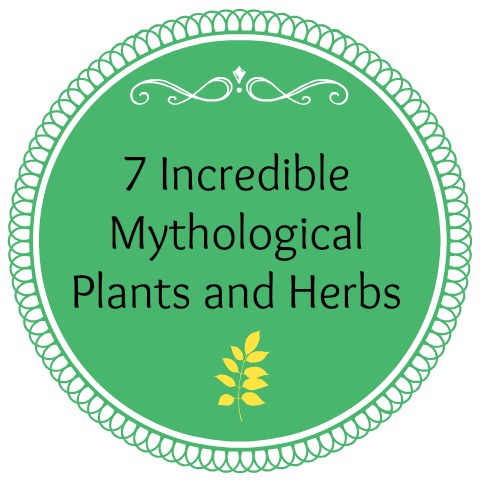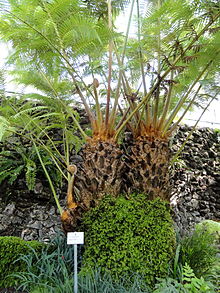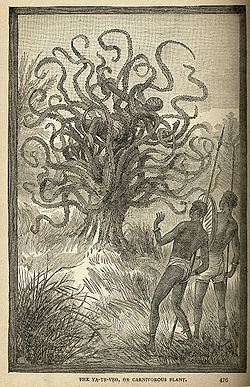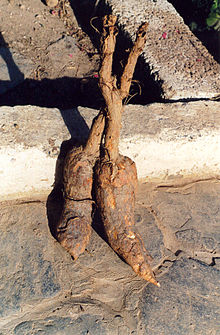Cultures all around the world have developed myths of strange creatures and mystical animals. Less well known, but equally interesting, are the many stories of mythical plants that have been passed down through the ages. Some of these plants are beneficial to humans, while others are harmful or even deadly.
Here are seven of the strangest mythological plants from folklore around the world.
Hungry Grass
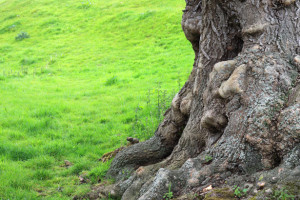
Tree And Grass by Petr Kratochvil
The legend of the hungry grass comes from Irish mythology. According to story, anyone who walks on this patch of cursed grass is doomed to suffer from an insatiable hunger for the rest of their lives. Two separate legends give the origin of the hungry grass. The first suggests that a curse is laid on existing grass by the presence of a corpse that has not been granted Last Rites. The second says that the grass was planted by malicious faeries.
Fern Flower
Also called the Chervona Ruta, the fern flower is a magical plant from Slavic mythology. It appears with small variations in stories from Belarus, Estonia, Latvia, Lithuania, Poland, Russia, and Ukraine. According to myth, the fern flower blooms only on the night of the summer solstice. Anyone who finds it and picks it will be granted extraordinary good luck. Stories about the fern flower tell of people who acquired fame, wealth, and the ability to understand animal speech. However, seekers of the flower are cautioned to beware. It is often guarded by evil spirits, and those who acquire money after finding the flower often find that their new riches come with a price.
Vegetable Lamb
The vegetable lamb of Tartary is a Western European myth that persisted well into the 17th century. Tales of a Central Asian plant that put forth fully grown sheep instead of flowers were widespread throughout England, France, and Germany. The vegetable lamb was said to grow on the steppes of Russia and China in great abundance, and the sheep flowers were harvested to make clothes. It seems likely that the myth comes from confused accounts of cotton plants, which was relatively uncommon in the West during the Middle Ages. As late as 1683, European scholars were still trying to locate samples of the elusive vegetable lamb.
Coco de Mer
The Coco de Mer is real palm tree native to the Seychelles. However, a number of interesting legends are told about this tree’s fruit. The nut of the Coco de Mer is roughly the size and shape of a woman’s pelvic region, which did nothing to dispel people’s fascination with it. For many centuries, the Seychelles were uninhabited, but occasionally Coco de Mer nuts would fall into the ocean and wash up on continental shores. Since the nuts seemed to float up from the bottom of the ocean, one common belief was that they “fell” from underwater trees.
The Madagascar Tree
The Madagascar tree was a hoax made famous in the late 19th century by the German explorer Carl Liche. Liche claimed to have witnessed a religious ceremony performed by a tribe in Madagascar where a human sacrifice was fed to a man-eating tree. The tree was described as looking like a giant Venus fly trap with thick tentacles in place of branches. The tentacles were used for capturing prey and drawing it in to the trap where, presumably, it was digested. Man-eating trees and other plants quickly became a favorite topic of Golden Age science fiction and adventure story writers.
Vampire Pumpkins
Insatiable blood thirsty pumpkins are part of the vampire folklore of the Balkan region. Legend has it that melons and pumpkins left on the vine overnight during a full moon transform into a vampires. A pumpkin that is undergoing a transformation is recognizable by a spot of blood on its outer shell. Once the transformation is complete, all the vampire pumpkins in the patch mass together and begin to shake. They make a sound described as “brrl, brrl, brrl!” The pumpkins travel in packs, rolling around the farmyard and causing mischief. However, they are not believed to be very dangerous vampires, and are easily dispatched by dropping them into a pot of boiling water.
Mandrake
The mandrake root is another example of a very real plant with a long mythological tradition attached to it. Mandrake has been an important ingredient in witchcraft and magical rituals dating back more than 2000 years. Those who would seek to gain the mandrake’s power had to do so carefully, however. According to another legend, the mandrake root screams when dug up and its piercing cry kills anyone within earshot.
Will you be looking to add some plants to your garden this year? Are you fearful of the adventure in these plants? Hungry Grass scares me the most because eating is already a favorite pastime. I surely don’t need an ‘insatiable hunger’ to doom me for the rest of my days. Which of these plants is most worrisome to you?
Lauren Hill is a contributing author for The Growers Exchange, an online gardening company offering potted plants and herbs as well as accessories. You can also find Lauren blogging over here.

